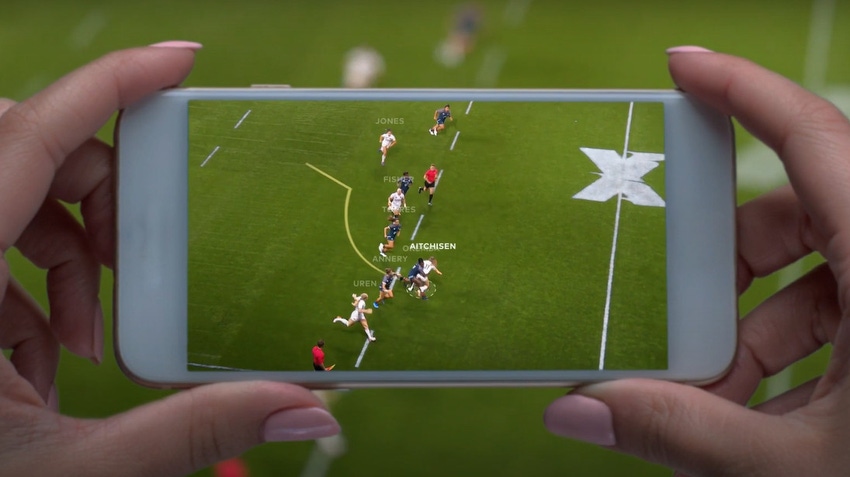Like most other sectors of life, sport has come a long way in using technology to support human decision making.
December 6, 2021

Telecoms.com periodically invites expert third parties to share their views on the industry’s most pressing issues. In this piece Prianca Ravichander, Director, Partnership Ecosystems at Tecnotree, examines how 5G could transform the consumption of sport.
“You cannot be serious” bellowed tennis champ John McEnroe during a heated Wimbledon championships match 40 years ago this year.
The phrase has immortalised the perennial struggle of sports stars and their fans when disputed and ‘too close to call’ decisions are made by referees and umpires. Today, fans can turn to ‘eye in the sky’ cameras to settle disputes, but not always.
Like most other sectors of life, sport has come a long way in using technology to support human decision making, providing insights into training and performance, and enhancing the experience of fans from the bleachers or the sofa.
5G – not just for mobile phones
Far from being just a hyper-fast highway for mobile phones to download data and browse the internet, 5G will have a massive beneficial impact bringing technologies like AI, augmented reality and IoT together, connecting devices and people in faster and more sophisticated ways.
That’s going to be true for sports too, and not just for the boom in esports. The introduction of high-speed, minimum latency internet will pave the way for high-quality, real-time video streaming services – a 5G ‘quick win’ to kick things off.
Multiple wireless cameras backed up by 5G will capture and stream every movement and moment of a game from different perspectives, with fans tapping into live streams and sharing them via their own social channels, without interruption and in high-definition.
McEnroe moments will be more quickly and fairly settled with augmented decision referral systems, that can turn to insightful data from cameras, the ground and even sensors embedded in active wear and redirect it on a real time basis to referees as well as fans, wherever they are.
The sofa experience, wherever you are
A comfy sofa, a widescreen TV, your preferred snacks and drinks and no queues for the restrooms – there’s certainly a lot of perks to watching your favourite players and teams from home.
Thanks to 5G-enabled IoT, fans can expect the same sofa experience at smart stadiums of the future. At the touch of a button on a phone, AI driven chatbots will give fans real-time parking space navigation, smart route suggestions to entrances, exits, restrooms, their seats and where to grab a burger, as well as updates on how busy locations are at different times.
From the point of view of arena owners, merchandise vendors, advertisers, and marketeers, 5G will provide real-time data into what’s proving popular with fans and what isn’t, when they want it, and when they don’t, as well as optimising management of the sport pitch, temperature, lighting, and crowd management.
The opportunity for personalised experiences and revenue generation are compelling.
And when it comes to sporting commentary, half time analysis or post-game reviews, the highs and lows can be re-lived as a 360 video stream, or as an immersive virtual reality twin that brings fans, wherever they are, into the action. 5G applications will let fans and commentators take a look at ‘what if’ moments by changing scenarios, moving players, adjusting the pace and so on.
5G-powered augmented reality can add a digital layer to a match, also giving a fan lots of ways to interact with 3D pop-outs of players, match stats, merchandise offers, and entertainment before the match and during breaks. Looking beyond the match such an experience would also prove popular at club and stadium exhibitions and museums.
5G Augmented sport performance
Yes, 5G will be amazing for stadiums and arenas and the opportunities for fans to engage with the action in more personalised, comfortable and data-driven ways, but 5G will also prove a boon for those on the other side of the chalkline – the sport stars.
For example, biosensors in training and sportswear (fabrics with sensors) will give coaches and managers insights into how a player is performing on and off the pitch. Body temperature, body heat maps, heart rates, sweat levels, and breathing will all feed into how players are trained and supported individually and collectively on and off the pitch or court.
Augmented and virtual reality will offer the same benefits to players and coaches as fans, with opportunities to set scenarios, play-back training and match days and create virtual training sessions. 5G combined with AR will enable live streaming of training sessions by coaches and connect them with players from across the globe on a real time basis.
As more data is gathered over time, coaches and managers will get a better picture of a sport star’s overall strengths and weaknesses, injury and fatigue risks, performance levels in different weather conditions and times of day. These reports can be used to curate a personalized plan of action for players to improve their game and help them reach their full potential. Additionally, these data reports on players could even form part of the decision making process around club transfers, team fits, fees and wages.
You might be thinking, “you cannot be serious” with so much tech up for grabs in the world of sport. But, when it comes to 5G, it’s going to be game, set, and match.
 Prianca Ravichander, Director of Partnerships and Ecosystems at Tecnotree OYJ heads up the company’s B2B2X revenue monetization programmes for CSPs and DSPs through the Tecnotree Moments platform. Previously, Prianca was instrumental in growing convergent ecosystems for high-tech/deep tech startups, smart cities and electronics system design manufacturing industries and over the last 10 years has worked with EY, Startup Karnataka, Tfiber, and KUIDFC. She has helped increasing digital access for government services through various initiatives. Her background includes work with public, private and PPP initiatives and she holds an MSc in Geo-statistical Econometric Analysis from Erasmus University.
Prianca Ravichander, Director of Partnerships and Ecosystems at Tecnotree OYJ heads up the company’s B2B2X revenue monetization programmes for CSPs and DSPs through the Tecnotree Moments platform. Previously, Prianca was instrumental in growing convergent ecosystems for high-tech/deep tech startups, smart cities and electronics system design manufacturing industries and over the last 10 years has worked with EY, Startup Karnataka, Tfiber, and KUIDFC. She has helped increasing digital access for government services through various initiatives. Her background includes work with public, private and PPP initiatives and she holds an MSc in Geo-statistical Econometric Analysis from Erasmus University.
Read more about:
DiscussionAbout the Author(s)
You May Also Like








.png?width=300&auto=webp&quality=80&disable=upscale)


_1.jpg?width=300&auto=webp&quality=80&disable=upscale)


.png?width=800&auto=webp&quality=80&disable=upscale)